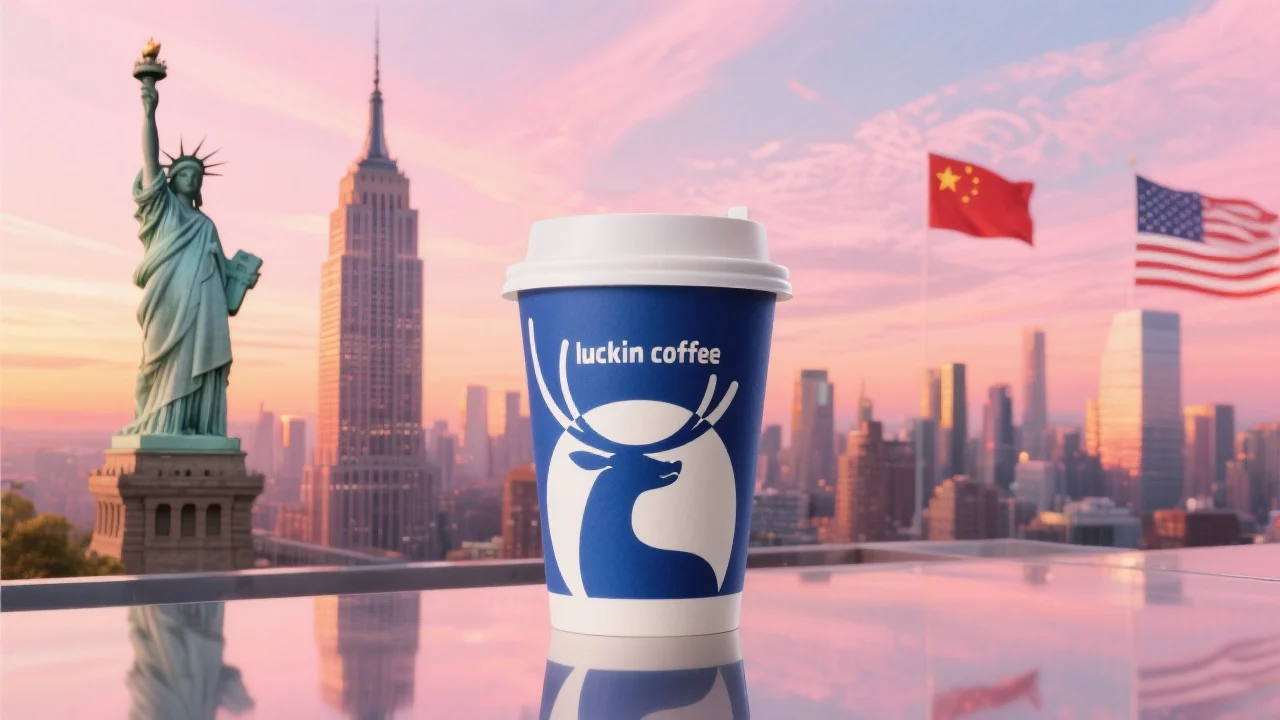
On a humid July morning, a new sign appeared on a block in Greenwich Village that’s seen more than its share of revolutions. This one, though, wasn’t a protest or a pop-up gallery.
It was a coffee shop, Luckin Coffee to be precise, the Chinese chain that’s been quietly rewriting the rules of caffeine consumption half a world away. The logo, a blue deer, looked almost bashful next to the brash neon of the city’s other chains. But make no mistake: this was a shot across the bow of Starbucks, right in the company’s spiritual homeland.
If you’ve never heard of Luckin, you’re not alone. Until recently, its story was mostly a Chinese phenomenon, a kind of business school case study in speed, scandal, and second acts. Founded in 2017, Luckin didn’t just grow, it metastasized, opening thousands of stores in a country where tea is still the default drink. By 2023, it had more locations in China than Starbucks, and for the first time, outsold the Seattle giant on its own turf. Not bad for a company that, just a few years earlier, was nearly sunk by an accounting scandal so brazen it made Enron look like amateur hour.
The Art of the Comeback
Luckin’s comeback is the kind of thing that would make a Hollywood screenwriter roll their eyes. After being delisted from the Nasdaq in 2020, Luckin could have faded into the long list of “what could have been” brands. Instead, it doubled down on what it did best: speed, tech, and a menu that reads like a Gen Z fever dream. In China, Luckin’s stores are almost frictionless, order on your phone, grab your drink, and go. No barista banter, no jazz playlists, no “can I get a name for the cup?” Just coffee, fast, and usually for less than you’d pay at Starbucks.
But New York isn’t Shanghai, and Luckin’s U.S. debut is a study in adaptation. The company’s first two stores, in Greenwich Village and NoMad, have had to tweak their model to fit local laws (New York doesn’t allow fully cashless businesses, for one). And while Luckin’s prices in China are famously low, here they’re only slightly undercutting Starbucks: a 16-ounce Americano is$4.45, compared to$4.95 at the Starbucks down the block. The menu, though, is pure Luckin: cold brews, fruit-infused “refreshers,” and flavors that sound like they were invented by a committee of TikTok influencers.
The Starbucks Paradox
Starbucks, for its part, is watching all this with the wary eye of an aging prizefighter. The company has spent decades selling the idea of the “third place,” not home, not work, but somewhere in between, with just enough comfort to make you linger. But lately, the formula has started to feel a little tired. Sales are down, both in China and at home, and the company is scrambling to recapture some of its old magic. There are whispers of a return to basics: more smiles, fewer complicated drinks, maybe even a little less tech.
Luckin, by contrast, is betting that the future of coffee is frictionless, digital, and just a little bit weird. In China, that meant undercutting Starbucks on price and speed. In New York, it means trying to win over a city that’s famously loyal to its routines. Will New Yorkers trade their morning ritual for a QR code and a pineapple cold brew? It’s too early to say, but the lines outside Luckin’s new stores suggest that at least some are willing to try.
Coffee as Cultural Exchange
There’s something quietly radical about a Chinese coffee chain trying to make it in America. For decades, the flow of coffee culture has gone in one direction: from Seattle to Shanghai, from Portland to Beijing. Now, the current is reversing. Luckin’s arrival is a reminder that globalization isn’t just about brands conquering new markets, it’s about ideas, habits, and tastes moving in unexpected directions.
Economists will tell you this is just the latest round in the endless game of market consolidation. Big chains get bigger, local shops get squeezed, and consumers get more choices (at least for a while). But for the people standing in line at Luckin’s Manhattan outposts, it’s something simpler: a new flavor, a new routine, a new way to start the day.
The Real Test
Luckin’s U.S. experiment is just beginning. Maybe it will fizzle, another foreign brand that couldn’t quite crack the code. Or maybe, a year from now, we’ll all be ordering our coffee through an app, sipping lychee lattes, and wondering how we ever lived without a blue deer on every corner. For now, though, the city has a new player in the coffee game, and the story is just getting interesting.
